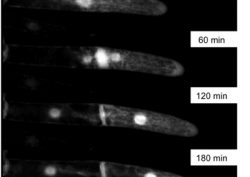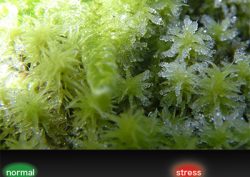Explore the mechanism of multicellularity

1. Examining intercellular communication mediated by the symplasmic connection via plasmodesmata, using microinjection and a photoconverting fluorescent protein.
2. Molecular screening for control of intercellular communication mediated by the size exclusion limit of plasmodesmata.
3. Researching the molecular mechanisms underlying the dynamic fluctuations of intercellular communication in response to environmental stress.
4. Researching the molecular mechanisms for transmission of external signals to the cell from the cell wall proteins in the extra-cellular matrix.
Learn more about the research
Plants have a unique form of intercellular communication, as plant cells have symplastic connections via plasmodesmata. The symplastic passage of RNAs and proteins affects the cell differentiation state and helps transmit external environment signals. We have recently visualized this type of intercellular communication and have successfully developed an experimental system for quantitative analysis (see diagram). By using this system and pairing live cell imaging with mathematical analysis, we plan to uncover the molecular mechanisms of intercellular communication mediated by the plasmodesmata, and shed light on the unique information transmission method of plants.

Department of Biological Sciences,
Faculty of Science, Hokkaido University









